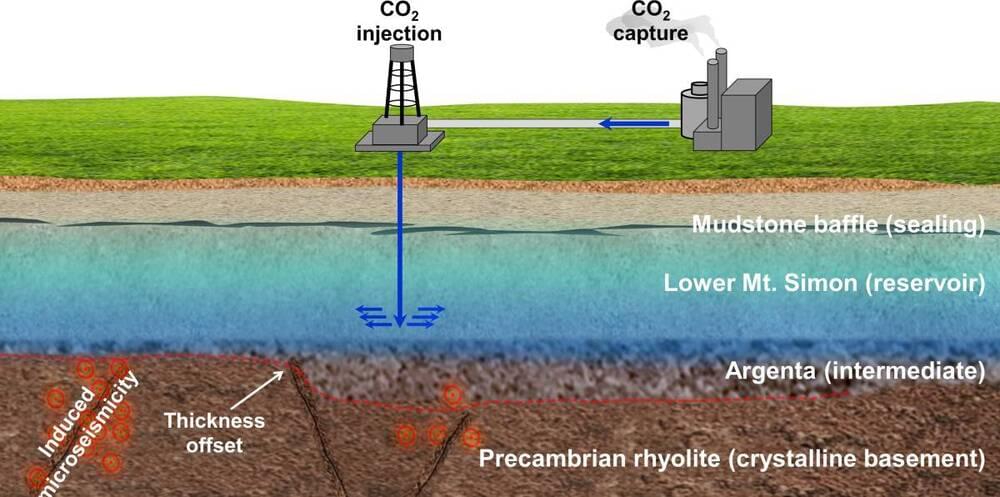Mitigating and reversing the effects of climate change is the most important scientific challenge facing humanity. Carbon sequestration describes a range of technologies with the potential to reduce the concentration of carbon dioxide (CO2) in the atmosphere. Most of these schemes involve storing the gas underground, however, this is not without risk, and scientists are concerned that underground storage could lead to increased seismic activity (a phenomenon known as “induced seismicity”).
Now, researchers in the US and Switzerland have studied microseismicity, the small seismic events caused by carbon injection into host rock, at the Illinois Basin Decatur Project (IBDP) in the midwestern US. In 2011–2014, the IBDP injected one million tonnes of CO2 into an underground reservoir just above a rhyolite crystalline basin. Nikita Bondarenko and Roman Makhnenko at the University of Illinois and Yury Podladchikov at the University of Lausanne have used a combination of field observations and computer simulations to show how microseismicity at the IBDP is highly dependent on the microscale structure of the host rock.
